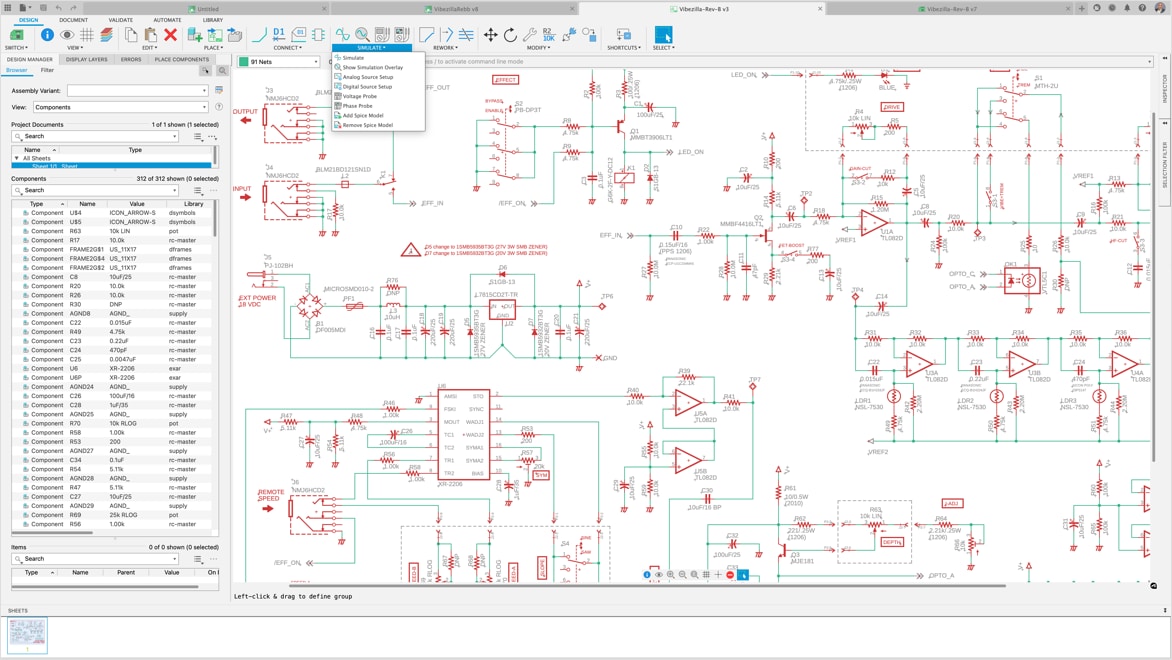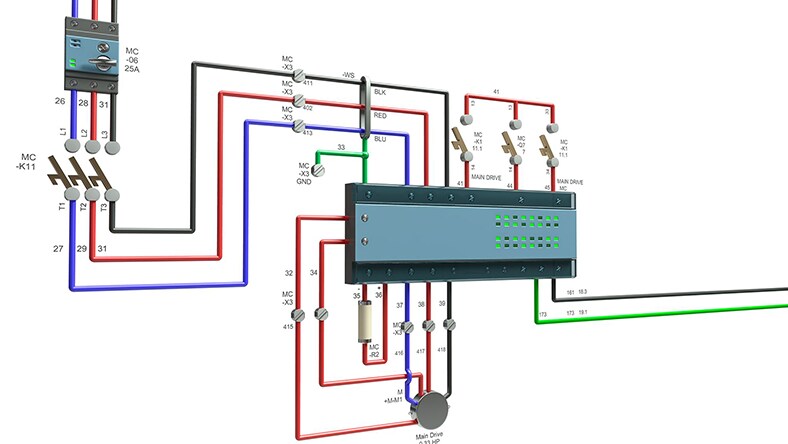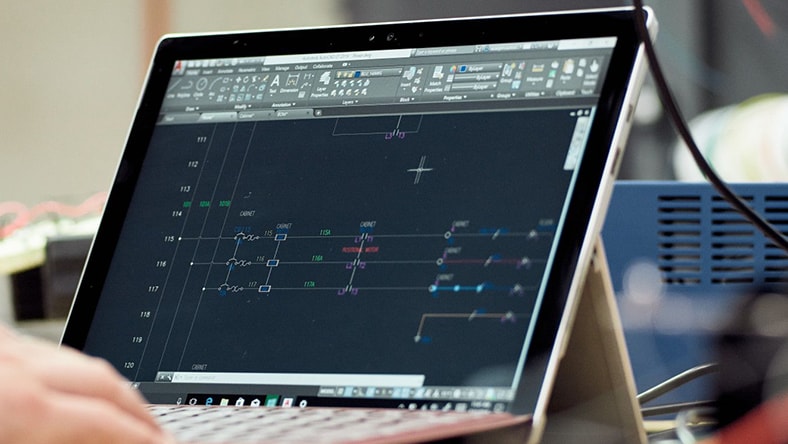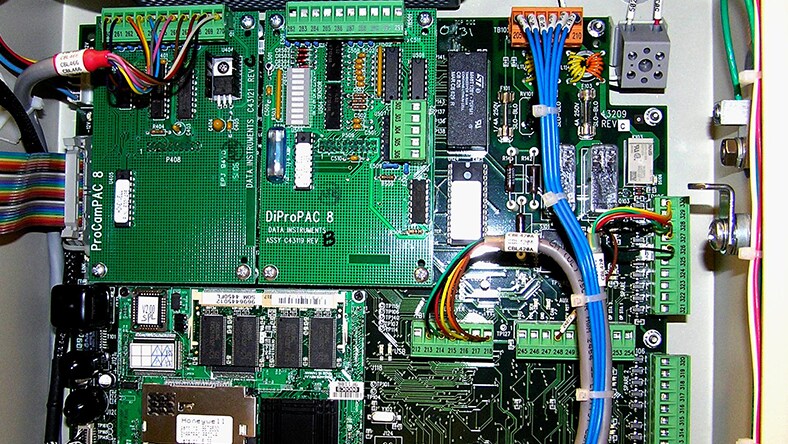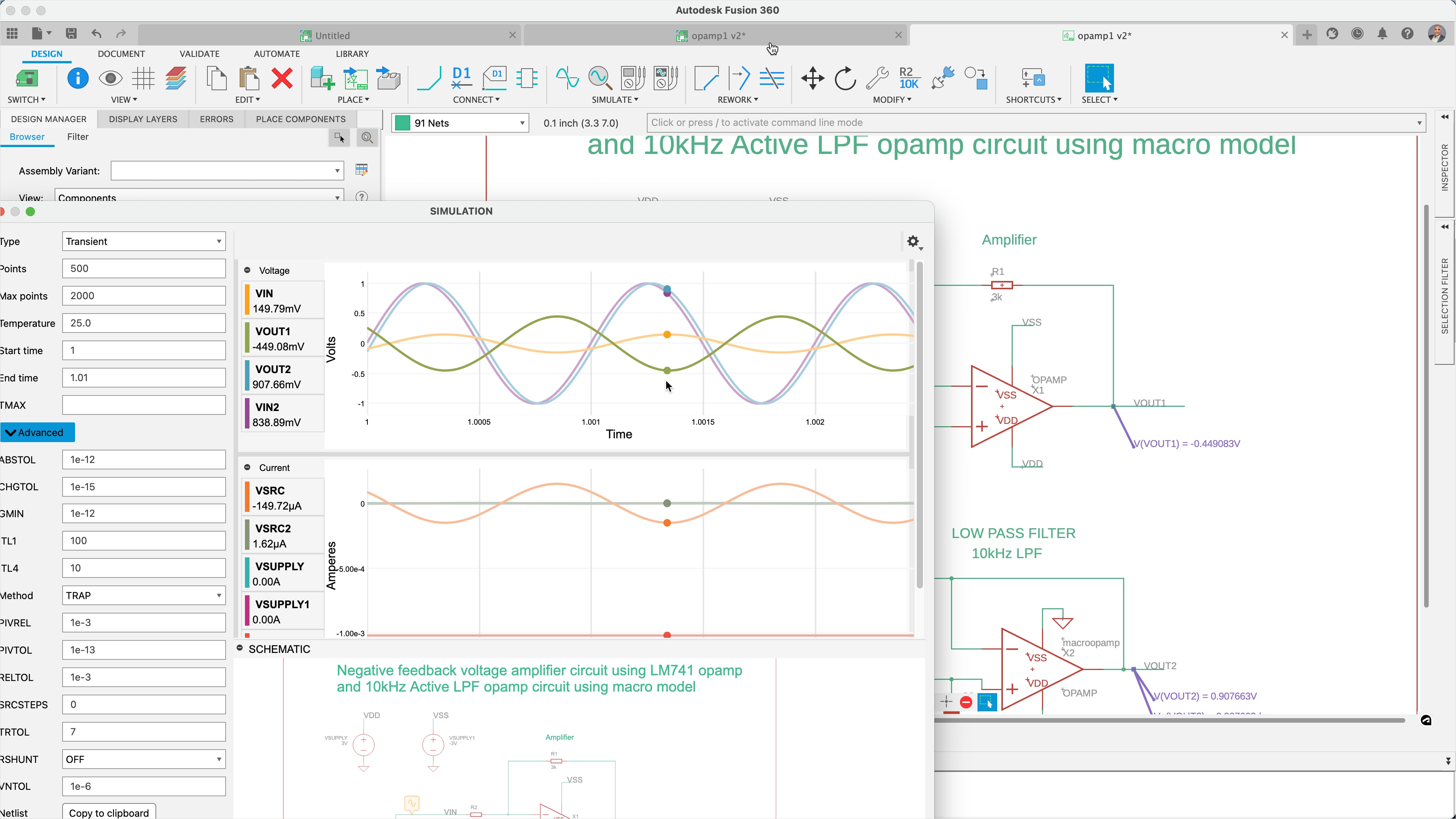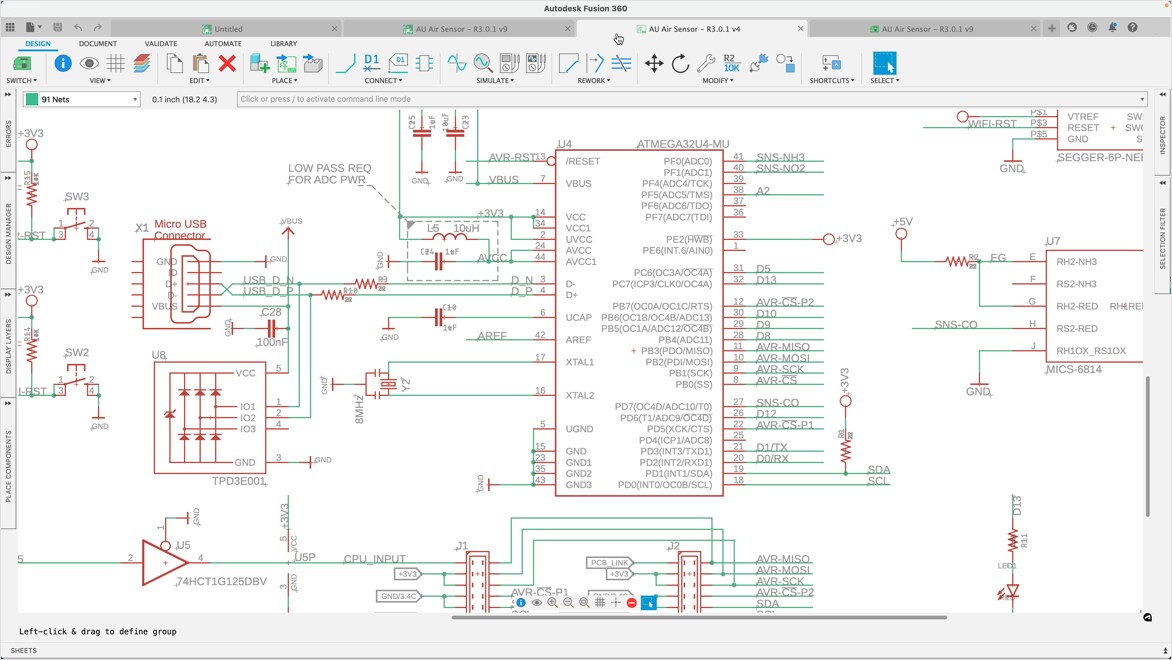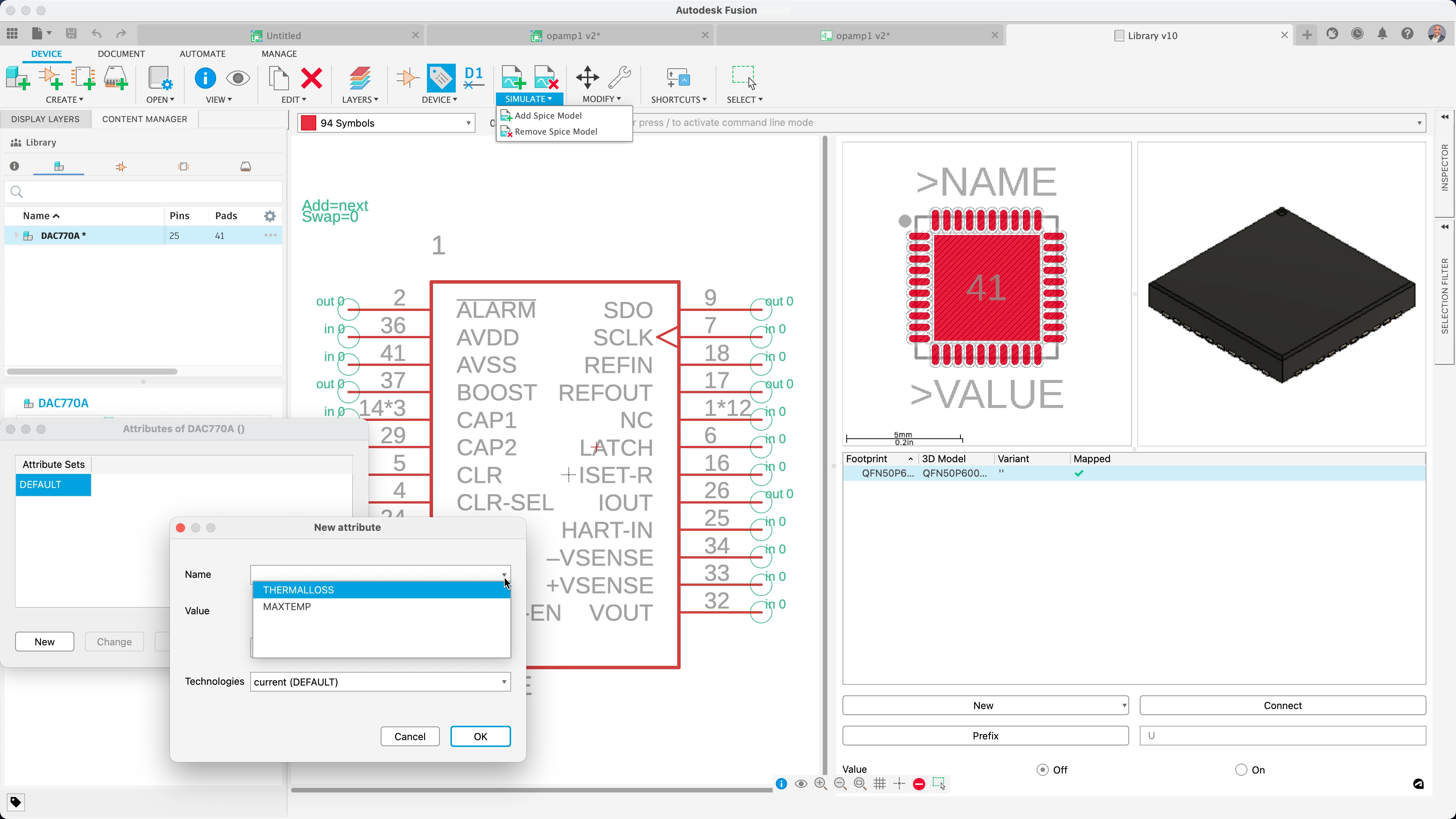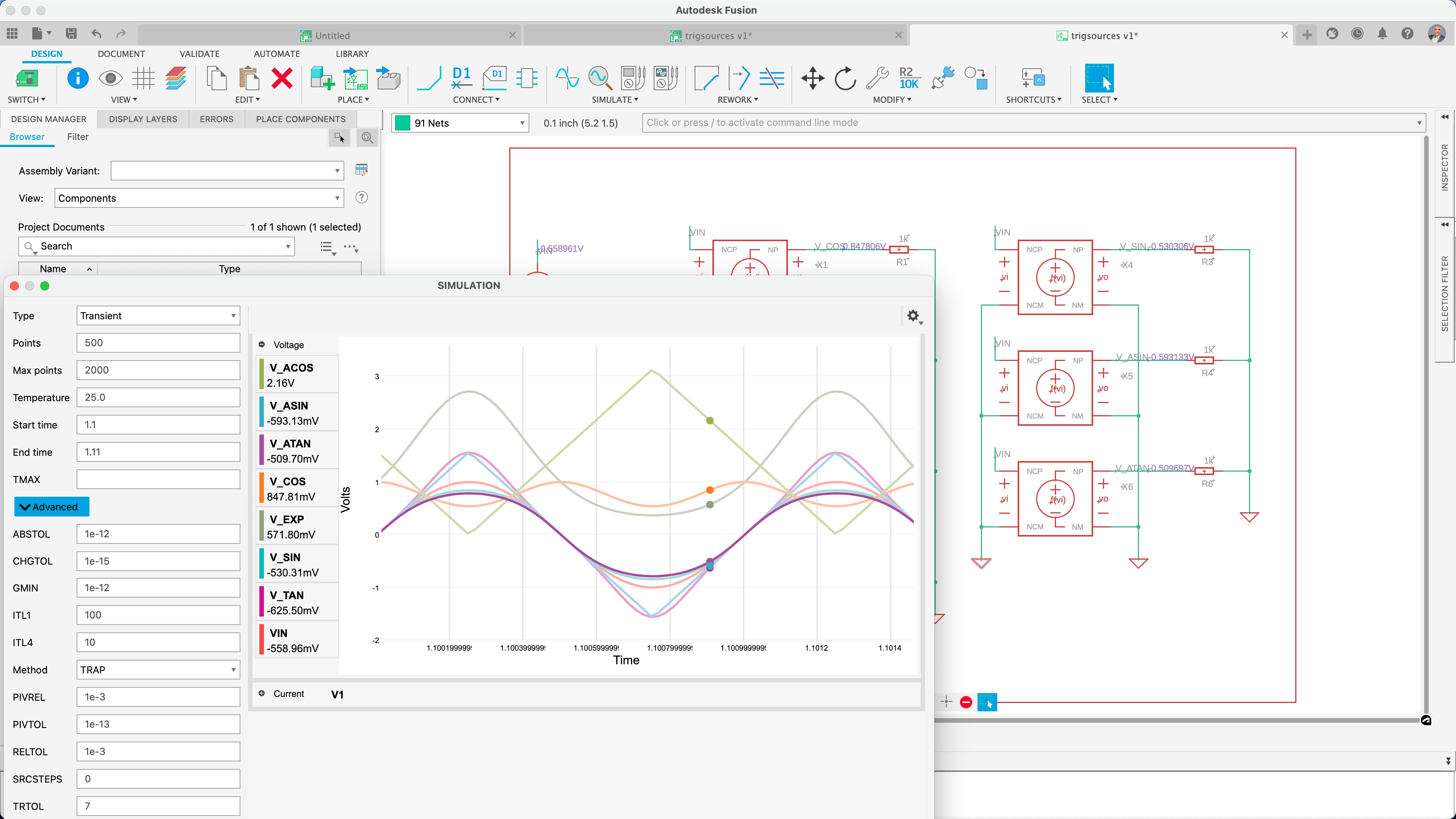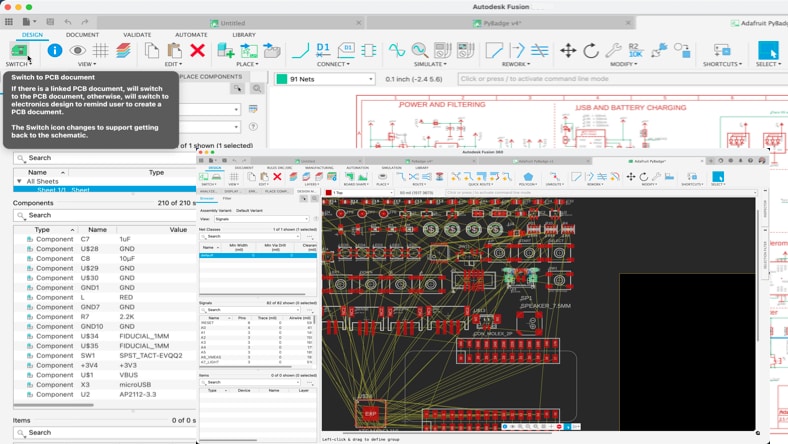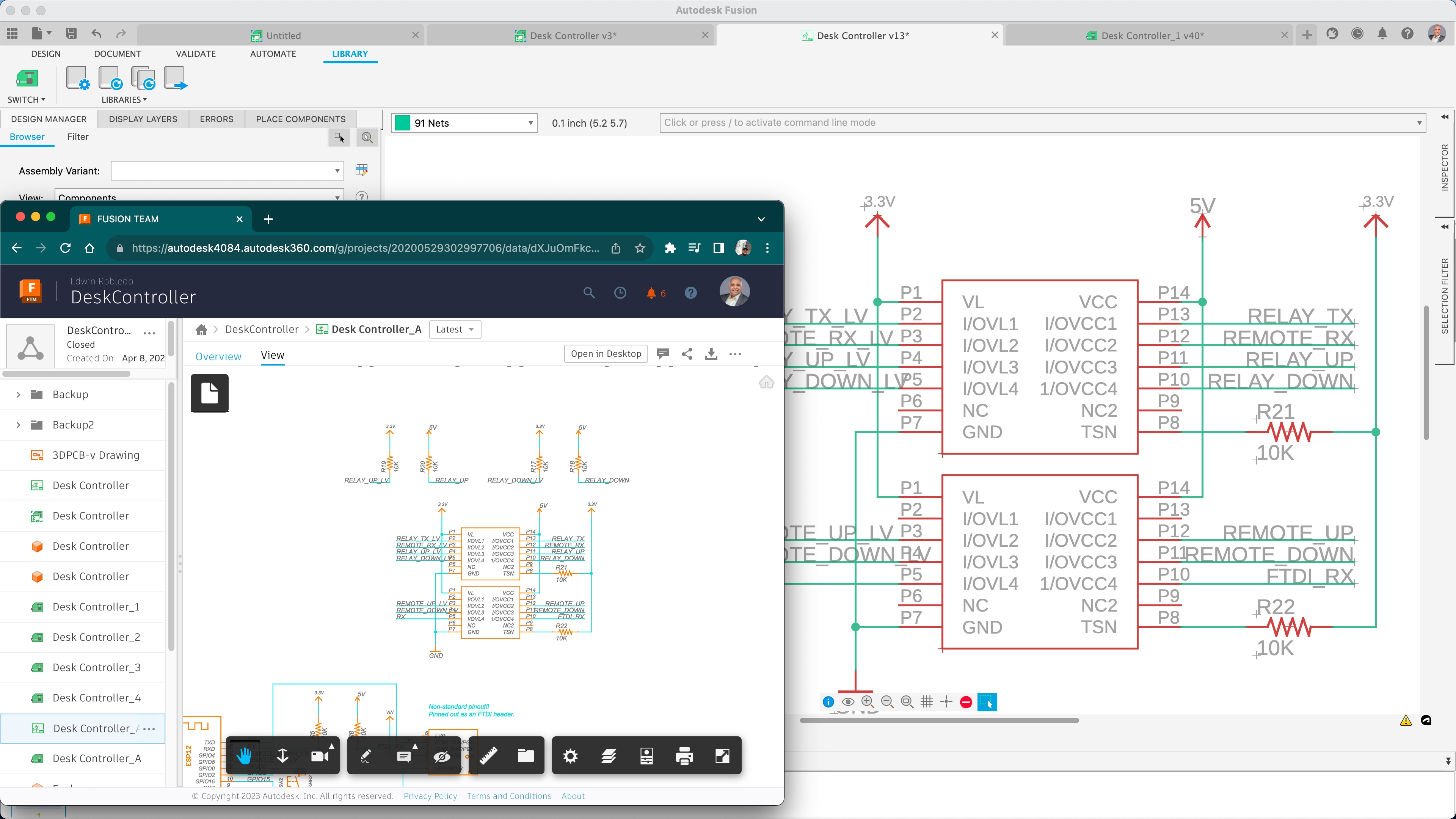& Construction

Integrated BIM tools, including Revit, AutoCAD, and Civil 3D
& Manufacturing

Professional CAD/CAM tools built on Inventor and AutoCAD
Electronic schematic software, also called electrical design automation (EDA) or electrical CAD (ECAD), is used to create and document electrical circuit designs. It enables designers and engineers to craft precise, logical representations of their circuits, transforming ideas into clear, visual schematics.
With this software, you can effortlessly visualize, analyze, and refine complex electrical designs. From concept to completion, it ensures your entire process is accurate and efficient.
Whether you’re simplifying a basic project or tackling a sophisticated system, electronic schematic software makes it easier to innovate and communicate your designs with clarity and confidence.
Electronic schematic designs are the cornerstone of consumer product creation. They provide the technical blueprint for your products’ functionality, reliability, and manufacturability.
This crucial phrase is where you translate electronic concepts into clear, actionable diagrams. You then use these electronic schematic diagrams to guide component selection, enable simulation studies, and simplify troubleshooting.
Adhering to industry standards at this stage streamlines production and ensures you have a definitive reference point throughout your product’s lifecycle.
By getting it right in the design phase, you improve the product’s market performance and guarantee compliance with industry regulations.
Electronic schematic designs come in various types, each tailored to different aspects and complexities of consumer electronics.
You’ll find block diagrams useful for getting a high-level view of a system. They outline major components and their interactions, making them perfect for the initial design brainstorming.
Circuit diagrams give you a detailed blueprint of electronic components and their connections. They’re essential for hands-on construction and troubleshooting your circuits.
Wiring diagrams show you the physical layout of electronic connections, guiding you through the wiring process and ensuring precise assembly.
Flowcharts help you map out the logical sequence of operation in a circuit. This makes it easier to grasp intricate processes and decision-making paths.
Reading electronic schematics involves understanding a visual language that represents electrical circuits. Begin by familiarizing yourself with electronic schematic symbols, which standardize the depiction of components like resistors, capacitors, and transistors. Each symbol connects through lines that indicate electrical connections.
Start by identifying the power sources and ground parts—these are usually marked clearly. Follow the flow of current through the circuit to understand how components interact, paying particular attention to the component values and labels for the precise functionality details. Use the schematic to trace connections, troubleshoot issues, and ensure each part aligns with the overall circuit design.
With practice, you’ll be able to decode these diagrams quickly. This skill will allow you to effectively build, analyze, and refine your electronic projects.
Optimize PCB design electromagnetic performance by controlling the impedance of every critical transmission line.
Schematic capture is a process used in electronic design automation (EDA) where engineers and designers create a visual representation of an electronic circuit. This graphical depiction, called a schematic diagram, includes symbols representing various electronic components including resistors, capacitors, transistors, and integrated circuits. Schematic capture is a critical step in the design and development of electronic systems because it allows designers to visualize and plan the functionality of the circuit prior to prototyping and manufacturing.
Schematic capture software, like Autodesk Fusion streamlines the design process, improves accuracy, and facilitates effective communication and collaboration among design team members. It's an essential tool for engineers and designers in the development of electronic circuits and systems.
Schematic capture provides numerous benefits in the design and development of electronic circuits. Here are some key advantages:
Schematic capture offers a clear and organized visual representation of an electronic circuit, making it easy to understand the layout and interconnections of various components.
Detailed schematics allow designers to identify and correct errors early in the design process. This reduces the risk of costly mistakes during manufacturing and ensures that the final product functions as intended.
Schematic capture software often includes tools for automating repetitive tasks like component placement and wiring. This accelerates the design process, boosts productivity, and gives designers the freedom to concentrate on more complex aspects of the circuit.
Schematic capture forms the foundation for subsequent stages of the electronic design process, such as simulation, PCB layout, and testing. It provides important documentation that facilitates collaboration, future modifications, and maintenance, so that all design details are accurately captured and accessible for reference.
Adhering to best practices for schematic capture is crucial for creating clear, accurate, and functional electronic circuit designs. Here are some top best practices:
Always use standard and universally recognized symbols for components to maintain consistency and make it easier for anyone reviewing the schematic to understand it.
Assign unique and descriptive reference designators to each component (e.g., R1, C1, U1) and ensure all labels are clear. This facilitates easy identification and troubleshooting.
Arrange components logically and group related components together to maintain a clean, organized layout to enhance readability and comprehension.
Design the schematic with the signal flow following a consistent direction, typically from left to right and top to bottom. This makes the circuit easier to follow and understand.
Assign meaningful names to nets (connections) to indicate their function or signal type to help identify connections and reduce errors.
Include annotations and notes to provide additional information about the circuit, such as operating conditions, component values, and special instructions.
Indicate power and ground connections using standard symbols to ensure proper understanding of the circuit's power distribution.
Avoid crossing wires when possible and use junction dots to clearly indicate connections and make sure that all connections are unambiguous.
With electronic schematic software, you’ll speed up development from concept to production, making sure every product works as intended while staying compliant with industry standards.
By using standardized electronic schematic symbols and notation, you can ensure uniformity. This makes reading more advanced schematics easier and your workflow faster and more accurate.
Software like Autodesk Fusion helps you simulate and test your electrical circuits, allowing you to spot errors and performance issues early. This means less reworks and a faster time to market, even for more complex designs.
Autodesk Fusion’s extensive library editor, with SPICE model mapping, ensures exact and systematized circuit simulations. This precision helps you verify designs and develop solutions with confidence.
Integrate schematic editing with SPICE simulation in Autodesk Fusion to validate your circuit designs. Reduce your workload and accelerate your path to market by making sure you get the expected results.
Easily convert electronic schematics to PCB layouts with Autodesk Fusion’s one-click tool. Preserve your annotations and synchronize updates, making your design process more valid and systematic.
Turn your design process up a notch with Autodesk Fusion’s collaboration features. Share electronic schematics and work collectively in real time to encourage creativity and streamline product development.
The schematic forms the building block of every electrical circuit, and even if you aren’t designing one yourself, knowing how to read one is invaluable.
Ready for that next great idea for a PCB project? It all starts with your schematic design. Get started with these tips.
Easily pint a schematic in Autodesk Fusion electronics by following these simple steps.
Autodesk is committed to educating tomorrow’s leaders. Get free access to our entire portfolio of products with the Autodesk Education plan.
Yes, electronics schematic software can be used for professional-grade projects. Many professionals in the electronics industry rely on such software for designing and documenting complex electronic circuits. These tools offer a range of features that make the design process more efficient and accurate. Some key features include schematic capture, component libraries, simulation, PCB layout integration, and Design Rule Checking (DRC).
Autodesk Fusion is a great electronics schematics software choice for beginners. With Fusion, you'll gain access to comprehensive electronics and PCB design tools in one product development solution.
No, it is not necessary to have a background in electrical engineering to use electronic schematic software. Autodesk Fusion is user-friendly and has an intuitive interface that makes it accessible to individuals without formal electrical engineering training.
Yes, many electronic schematic software tools come with simulation capabilities that allow you to simulate and analyze the behavior of your circuit designs before physically building them. Simulation is a valuable feature that can help you identify potential issues, validate your design, and optimize performance. Learn how Autodesk Fusion can help.
Electronic schematics and wiring diagrams serve different purposes in the field of electrical and electronic design, even though they may look somewhat similar. An electronic schematic is a representation of an electrical circuit using symbols for components and lines to show the connections between them. It is a detailed diagram that provides information about the components, their values, and the relationships between them in a circuit. Schematics are used for circuit design, analysis, and documentation. A wiring diagram, on the other hand, focuses specifically on the physical layout of wires and connections between components. It shows how the components are physically connected, often with more emphasis on the routing of wires and cables. Wiring diagrams are typically used for installation and troubleshooting.
Electronic schematics are crucial in the field of electronics for many reasons including:
Autodesk Fusion provides a unified product development platform that combines CAD, CAM, CAE tools and PCB, allowing for seamless transitions between schematic capture, PCB design, mechanical design, and manufacturing processes.
Schematic capture provides a clear and organized visual representation of an electronic circuit, making it easier to understand the layout and interconnections of various components. By creating a detailed schematic, electronics engineers can identify and correct errors early in the design process, reducing the risk of costly mistakes during manufacturing. Schematic capture also generates essential documentation that serves as a reference throughout the design lifecycle.
Schematic capture software also includes tools for automating repetitive tasks, such as component placement and wiring, which speeds up the design process. It further serves as the foundation for subsequent stages of the electronic design process, including simulation, PCB layout, and testing, ensuring that all design details are accurately captured and easily accessible. Overall, schematic capture is essential for creating accurate, efficient, and reliable electronic designs, leading to better project outcomes and higher-quality products.To make an electronic schematic, start by placing components in your design software and connecting them with wires, making sure you use the correct symbols. Then, simulate and review your design to verify everything works before finalizing.

